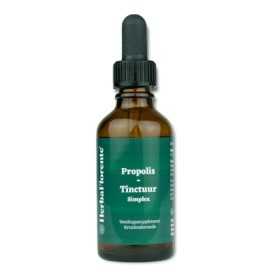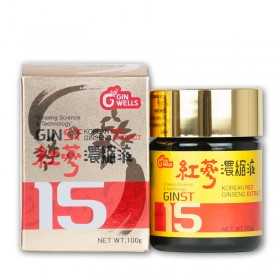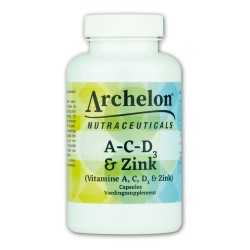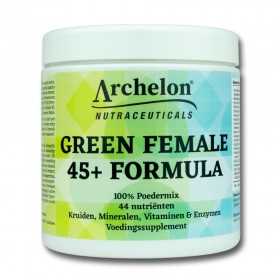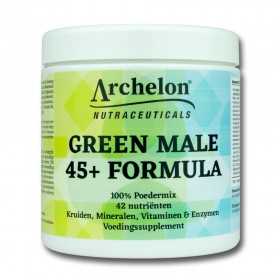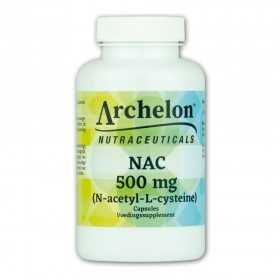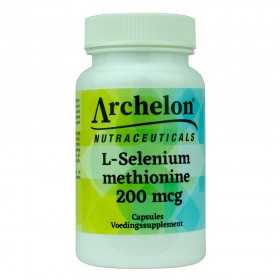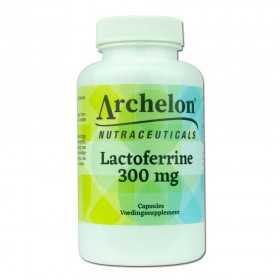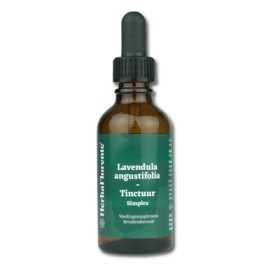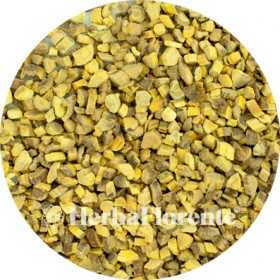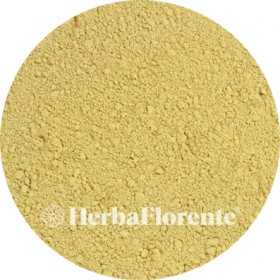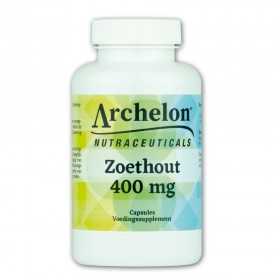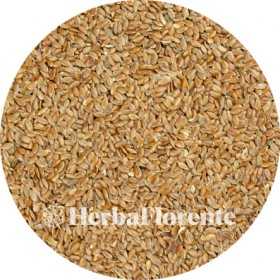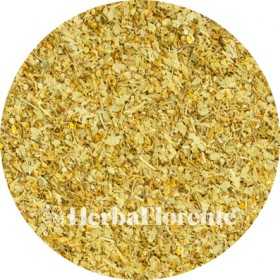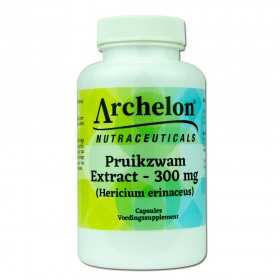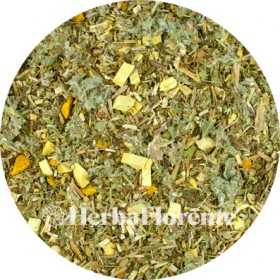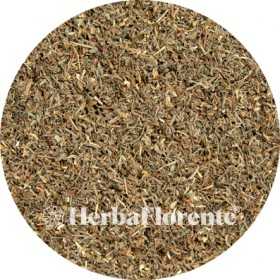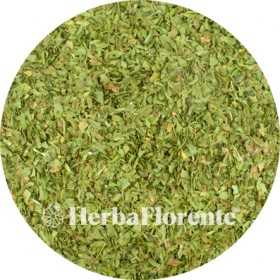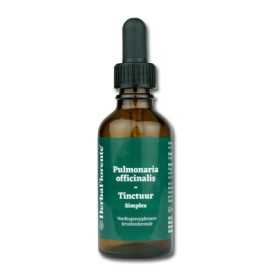Home
There are 409 products.
L-Lysine - 375 mg
Lysine is an essential amino acid, meaning the body cannot produce it itself and must therefore obtain it from food or supplements. Lysine is found in meat, vegetables and fruit, among other things. It plays a role in various biochemical processes in the body. For example, L-lysine helps with the absorption of calcium and is a building block for the production of proteins.
€17.95
L-Selenium methionine - 200 mcg
Selenium is an essential mineral that plays a role in various processes in our body. It is bound to methionine, an essential sulfur amino acid. This powerful mineral supports the thyroid, promotes fertility in men and contributes to healthy hair and nails. As an antioxidant, it protects our immune system and helps protect healthy tissues and cells in our body against oxidative damage.
We can get selenium from food, both plant and animal sources. The amount of selenium in plant foods can vary depending on the amount of selenium in the soil in which the plants grow. In order not to be dependent on varying factors, it can be useful to take a selenium supplement.
We can get selenium from food, both plant and animal sources. The amount of selenium in plant foods can vary depending on the amount of selenium in the soil in which the plants grow. In order not to be dependent on varying factors, it can be useful to take a selenium supplement.
€17.95
L-Tryptophan - 250 mg
Tryptophan is an essential amino acid, which means that the body cannot produce it itself and must therefore get it from food or supplementation. Tryptophan is found in meat, vegetables and fruit, among other things. Tryptophan is the only precursor of the neurotransmitter serotonin. Tryptophan also has several other functions.
€24.95
Lactoferrin - 300 mg
Lactoferrin, a natural substance present in breast milk and various body fluids, is composed of the words "lacto", referring to milk, and "ferrin", referring to iron. It acts as a protein that binds iron and is mainly located in mucous membranes, nasal and respiratory tracts and the gastrointestinal tract. This property is beneficial because it helps sequester iron, which prevents bad bacteria from thriving in the intestines. Lactoferrin plays several roles in our bodies and although our bodies can produce it in limited quantities, as humans we mainly receive large amounts shortly after birth.
€89.95
Lady's Mantle - Alchemilla vulgaris
Lady's mantle (Alchemilla vulgaris) is a genus of about a thousand species of perennial herbaceous and shrubby plants belonging to the rose family (Rosaceae). It is mainly found in Europe and Asia, with some species in the mountainous areas of Africa, North and South America. Lady's mantles thrive in disturbed and usually damp places, such as forest edges, wet grasslands and roadsides.
€2.50
From: €2.50
Lady's Mantle Tincture - Alchemilla vulgaris Tincture
Single herbal tincture made with dried herb of Alchemilla vulgaris (Lady's Mantle).
Lady's mantle (Alchemilla vulgaris) is a genus of about a thousand species of perennial herbaceous and shrubby plants belonging to the rose family (Rosaceae). It is mainly found in Europe and Asia, with some species in the mountainous areas of Africa, North and South America. Lady's mantles thrive in disturbed and usually damp places, such as forest edges, wet grasslands and roadsides.
Lady's mantle (Alchemilla vulgaris) is a genus of about a thousand species of perennial herbaceous and shrubby plants belonging to the rose family (Rosaceae). It is mainly found in Europe and Asia, with some species in the mountainous areas of Africa, North and South America. Lady's mantles thrive in disturbed and usually damp places, such as forest edges, wet grasslands and roadsides.
€12.95
Lavender - Lavendula angustifolia
Lavender (Lavandula) is a genus of dwarf shrubs belonging to the Lamiaceae family. These plants are often planted in gardens for their purple flowers and wonderful scent.
An important reason for growing lavender is the lavender oil extracted from the purple flowers. This oil is widely used as a fragrance in cosmetic products such as soap and perfume, and also in aromatherapy.
Lavender flowers are used in cooking, especially as part of Provencal herb mixtures. They can be used fresh or dried to flavor various dishes, such as French cheeses, carrots and tomatoes.
An important reason for growing lavender is the lavender oil extracted from the purple flowers. This oil is widely used as a fragrance in cosmetic products such as soap and perfume, and also in aromatherapy.
Lavender flowers are used in cooking, especially as part of Provencal herb mixtures. They can be used fresh or dried to flavor various dishes, such as French cheeses, carrots and tomatoes.
€5.00
From: €5.00
Lavender Tincture - Lavendula angustifolia Tincture
Single herbal tincture made with dried flower of Lavendula angustifolia (Lavender).
Lavender (Lavandula) is a genus of dwarf shrubs belonging to the Lamiaceae family. These plants are often planted in gardens for their purple flowers and wonderful scent.
An important reason for growing lavender is the lavender oil extracted from the purple flowers. This oil is widely used as a fragrance in cosmetic products such as soap and perfume, and also in aromatherapy.
Lavender flowers are used in cooking, especially as part of Provencal herb mixtures. They can be used fresh or dried to flavor various dishes, such as French cheeses, carrots and tomatoes.
Lavender (Lavandula) is a genus of dwarf shrubs belonging to the Lamiaceae family. These plants are often planted in gardens for their purple flowers and wonderful scent.
An important reason for growing lavender is the lavender oil extracted from the purple flowers. This oil is widely used as a fragrance in cosmetic products such as soap and perfume, and also in aromatherapy.
Lavender flowers are used in cooking, especially as part of Provencal herb mixtures. They can be used fresh or dried to flavor various dishes, such as French cheeses, carrots and tomatoes.
€12.95
Lemon Balm - Melissa officinalis
Lemon balm (Melissa officinalis) is a perennial plant from the Lamiaceae family known for its lemony scent. This plant grows mainly in southern Europe, but can be easily propagated in temperate regions such as the Netherlands and Belgium, as it survives in winter via rhizomes. The plant reaches a height of about 0.5 meters.
Lemon balm has a long history; The plant was already known to various peoples 2000 years ago. The Arabs probably brought the plant to Europe via Spain, after which monasteries initially engaged in its cultivation. Ancient scriptures state that lemon balm leaves warm the stomach, aid digestion, dispel gloom and promote cheerful dreams. The leaves are often used in dishes, tea, oil or creams.
Lemon balm has a long history; The plant was already known to various peoples 2000 years ago. The Arabs probably brought the plant to Europe via Spain, after which monasteries initially engaged in its cultivation. Ancient scriptures state that lemon balm leaves warm the stomach, aid digestion, dispel gloom and promote cheerful dreams. The leaves are often used in dishes, tea, oil or creams.
€2.00
From: €2.00
Lemongrass - Cymbopogon citratus
Lemongrass, also known as sereh (Cymbopogon citratus), belongs to the grass family (Poaceae). This plant is widely used in Asian cuisine, especially in dishes from Thailand, India, Vietnam and Indonesia. Lemongrass thrives in several regions, including India, Africa, Vietnam, Australia and America. In Indonesia it is known as sereh, and this name is also often used in the Netherlands.
The leaves of the lemongrass plant are the culinary stars. They have a refreshing, lemony taste and are not consumed raw. Pieces of lemongrass are often added to dishes during cooking or stewing, after which they are removed before serving.
The leaves of the lemongrass plant are the culinary stars. They have a refreshing, lemony taste and are not consumed raw. Pieces of lemongrass are often added to dishes during cooking or stewing, after which they are removed before serving.
€2.00
From: €2.00
Licorice (Without Bark) - Glycyrrhiza glabra, Liquiritiae
Licorice (Glycyrrhiza glabra) is a versatile herb that plays an important role in Ayurvedic medicine. It is known for its beneficial effects on digestion and maintaining flexible joints, while also soothing the respiratory tract.
This plant is grown in various parts of the world, including Europe, Asia and the Middle East. It is a hardy plant that even thrives in the Netherlands. However, it takes three to four years before the roots can be harvested.
In addition to the roots, the leaves can also be used, for example to make tea. Licorice is widely used in foods and pharmaceuticals because of its sweet taste and other ingredients.
This plant is grown in various parts of the world, including Europe, Asia and the Middle East. It is a hardy plant that even thrives in the Netherlands. However, it takes three to four years before the roots can be harvested.
In addition to the roots, the leaves can also be used, for example to make tea. Licorice is widely used in foods and pharmaceuticals because of its sweet taste and other ingredients.
€2.25
From: €2.25
Licorice - Glycyrrhiza glabra, Liquiritiae
Licorice (Glycyrrhiza glabra) is a versatile herb that plays an important role in Ayurvedic medicine. It is known for its beneficial effects on digestion and maintaining flexible joints, while also soothing the respiratory tract.
This plant is grown in various parts of the world, including Europe, Asia and the Middle East. It is a hardy plant that even thrives in the Netherlands. However, it takes three to four years before the roots can be harvested.
In addition to the roots, the leaves can also be used, for example to make tea. Licorice is widely used in foods and pharmaceuticals because of its sweet taste and other ingredients.
This plant is grown in various parts of the world, including Europe, Asia and the Middle East. It is a hardy plant that even thrives in the Netherlands. However, it takes three to four years before the roots can be harvested.
In addition to the roots, the leaves can also be used, for example to make tea. Licorice is widely used in foods and pharmaceuticals because of its sweet taste and other ingredients.
€2.00
From: €2.00
Licorice Root - 400 mg
Licorice (Glycyrrhiza glabra) is a versatile herb that plays an important role in Ayurvedic medicine. It is known for its beneficial effects on digestion and maintaining flexible joints, while also soothing the respiratory tract.
This plant is grown in various parts of the world, including Europe, Asia and the Middle East. It is a hardy plant that even thrives in the Netherlands. However, it takes three to four years before the roots can be harvested.
In addition to the roots, the leaves can also be used, for example to make tea. Licorice is widely used in foods and pharmaceuticals because of its sweet taste and other ingredients.
This plant is grown in various parts of the world, including Europe, Asia and the Middle East. It is a hardy plant that even thrives in the Netherlands. However, it takes three to four years before the roots can be harvested.
In addition to the roots, the leaves can also be used, for example to make tea. Licorice is widely used in foods and pharmaceuticals because of its sweet taste and other ingredients.
€17.95
Licorice Tincture - Glycyrrhiza glabra Tincture
Single herbal tincture made with dried root of Glycyrrhiza glabra (Licorice).
Licorice (Glycyrrhiza glabra) is a versatile herb that plays an important role in Ayurvedic medicine. It is known for its beneficial effects on digestion and maintaining flexible joints, while also soothing the respiratory tract.
This plant is grown in various parts of the world, including Europe, Asia and the Middle East. It is a hardy plant that even thrives in the Netherlands. However, it takes three to four years before the roots can be harvested.
Licorice (Glycyrrhiza glabra) is a versatile herb that plays an important role in Ayurvedic medicine. It is known for its beneficial effects on digestion and maintaining flexible joints, while also soothing the respiratory tract.
This plant is grown in various parts of the world, including Europe, Asia and the Middle East. It is a hardy plant that even thrives in the Netherlands. However, it takes three to four years before the roots can be harvested.
€9.95
Lijnzaad - Linum usitatissimum
Flaxseed is rich in omega-3 fatty acids, with an impressive 55% alpha-linolenic acid (ALA) content. It also contains tocopherols, carotenoids, minerals and lignans (phytosterols). Also, about 20% of its fatty acid is omega 9 (oleic acid). The Nutrition Center emphasizes the beneficial effects of omega-3 fatty acids on the heart and blood vessels. The flax plant (Linum usitatissimum), from which linseed is harvested, is distributed worldwide and humanity has used linseed since 7000 BC.
€2.00
From: €2.00
Lime tree Blossom - Tiliae officinalis
The lime tree (Tilia) is native to the Benelux and is known for its remarkable lifespan, which can easily exceed 1000 years. This majestic tree can reach a height of 20 to 30 meters, depending on its growing conditions. The Latin name for the lime tree is Tilia.
Although the lime tree is widespread in Europe, it is not found in the northernmost and southernmost parts of the continent. Outside Europe, the lime is also found in parts of Asia, but to a much lesser extent.
The tree blooms in the months of June and July. The lime blossom produces a lot of honey, and the flowers can be used to make herbal tea.
Although the lime tree is widespread in Europe, it is not found in the northernmost and southernmost parts of the continent. Outside Europe, the lime is also found in parts of Asia, but to a much lesser extent.
The tree blooms in the months of June and July. The lime blossom produces a lot of honey, and the flowers can be used to make herbal tea.
€5.00
From: €5.00
Lime tree Tincture - Tiliae officinalis Tincture
Single herbal tincture made with dried flower of Tiliae officinalis (Lime tree).
The lime tree (Tilia) is native to the Benelux and is known for its remarkable lifespan, which can easily exceed 1000 years. This majestic tree can reach a height of 20 to 30 meters, depending on its growing conditions. The Latin name for the lime tree is Tilia.
Although the lime tree is widespread in Europe, it is not found in the northernmost and southernmost parts of the continent. Outside Europe, the lime is also found in parts of Asia, but to a much lesser extent.
The tree blooms in the months of June and July. The lime blossom produces a lot of honey, and the flowers can be used to make herbal tea.
The lime tree (Tilia) is native to the Benelux and is known for its remarkable lifespan, which can easily exceed 1000 years. This majestic tree can reach a height of 20 to 30 meters, depending on its growing conditions. The Latin name for the lime tree is Tilia.
Although the lime tree is widespread in Europe, it is not found in the northernmost and southernmost parts of the continent. Outside Europe, the lime is also found in parts of Asia, but to a much lesser extent.
The tree blooms in the months of June and July. The lime blossom produces a lot of honey, and the flowers can be used to make herbal tea.
€11.95
Lion's Mane Mushroom Extract (Hericium Erinaceus) - 300 mg
Hericium Erinaceus is known by several names, including 'lion's mane mushroom', 'wig fungus' and 'monkey head'. It belongs to the stem mushroom family and is an edible mushroom found in Europe, North America and Asia. The Latin term 'erinaceus' refers to hedgehogs, because of the mushroom's long spines, which is why it is also called 'wig fungus'. Another nickname is 'lion's mane', due to its appearance resembling a lion's mane. Due to its high protein content, it is often used as a meat substitute in Chinese cuisine.
High quality Hericium erinaceus extract
Standardized to 50% polysaccharides
High quality Hericium erinaceus extract
Standardized to 50% polysaccharides
€39.95
Liver Stimulant Herbal Tea
Herbal tea composed of various herbs
Support for the Liver
Support for the Liver
€4.95
Long Leaved Sundew - Droserae longifolia
The long sundew (Drosera longifolia) is a perennial carnivorous plant belonging to the sundew family (Droseraceae).
The plant grows to a height of 5-20 cm and forms a rosette of leaves. The leaves have long stems and are upright, oblong to lanceolate, with the widest point above the center. They are covered with numerous red, sticky tentacles containing glandular tissue. These tentacles catch small insects such as Simuliidae. Once an insect touches the tentacles, the leaf coils around the insect and secretes digestive enzymes. The released nutrients, including nitrogen, are absorbed by the plant.
The plant grows to a height of 5-20 cm and forms a rosette of leaves. The leaves have long stems and are upright, oblong to lanceolate, with the widest point above the center. They are covered with numerous red, sticky tentacles containing glandular tissue. These tentacles catch small insects such as Simuliidae. Once an insect touches the tentacles, the leaf coils around the insect and secretes digestive enzymes. The released nutrients, including nitrogen, are absorbed by the plant.
€5.40
From: €5.40
Lovage - Levisticum officinale
Lovage, also known as the maggi plant, is a perennial plant from the umbellifer family (Apiaceae). The name "maggi plant" refers to the strong smell, which is reminiscent of the maggi aroma. However, the herb is not an ingredient in the original Maggi recipe.
Originally from Southeast Asia and Iran, the Romans spread lovage throughout Europe during their conquests. Today, the plant grows in large parts of Europe and North America and occasionally occurs in northern Thailand.
Originally from Southeast Asia and Iran, the Romans spread lovage throughout Europe during their conquests. Today, the plant grows in large parts of Europe and North America and occasionally occurs in northern Thailand.
€3.50
From: €3.50
Lucid Dream Herbal Tea
Herbal tea composed of various herbs
Nice before going to sleep
Nice before going to sleep
€3.95
Lungwort - Pulmonaria officinalis
Lungwort, belonging to the genus Pulmonaria in the rough-leaved family (Boraginaceae), owes its botanical name to the Latin word 'pulmo', which means 'lung'. This is because of the similarity that was seen between the drawing on the leaves of the spotted lungwort and (diseased) human lungs. According to the signature theory, the plant was previously used as a remedy for lung diseases because of this similarity. The Dutch name 'pulmonary herb' is directly derived from the botanical name, and this name also occurs in several other Western European languages.
€5.91
€6.95
From: €5.91
Lungwort Tincture - Pulmonaria officinalis Tinctuur
Single herbal tincture made with dried leaf of Pulmonaria officinalis (Lungwort).
Lungwort, belonging to the genus Pulmonaria in the rough-leaved family (Boraginaceae), owes its botanical name to the Latin word 'pulmo', which means 'lung'. This is because of the similarity that was seen between the drawing on the leaves of the spotted lungwort and (diseased) human lungs. According to the signature theory, the plant was previously used as a remedy for lung diseases because of this similarity. The Dutch name 'pulmonary herb' is directly derived from the botanical name, and this name also occurs in several other Western European languages.
Lungwort, belonging to the genus Pulmonaria in the rough-leaved family (Boraginaceae), owes its botanical name to the Latin word 'pulmo', which means 'lung'. This is because of the similarity that was seen between the drawing on the leaves of the spotted lungwort and (diseased) human lungs. According to the signature theory, the plant was previously used as a remedy for lung diseases because of this similarity. The Dutch name 'pulmonary herb' is directly derived from the botanical name, and this name also occurs in several other Western European languages.
€11.95

